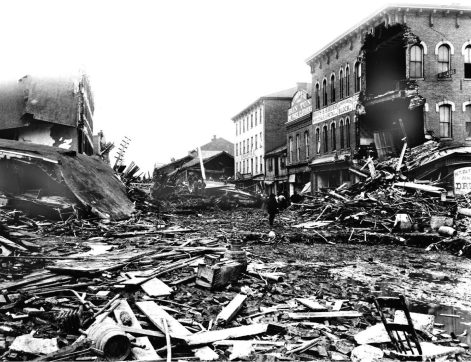Dam Safety Awareness Day was established to commemorate the lives lost in the Johnstown Flood. The tragedy occurred on May 31, 1889 when the South Fork Dam burst sending a flood of water that resulted in the destruction of 1,600 homes, $17 million in property damage (current value of approximately $425 million) and the deaths of 2,209 people (including the entirety of 99 families; of the deceased, 396 were children) in the valley below in Johnstown, Pennsylvania. While this is the worst dam failure in the United States it has become symbolic in our history. Unfortunately it is not the only incident of dam failure.
As we remember the lives lost and the heroes who worked to minimize damage and save lives, we also must remember the lessons learned in regard to dam engineering. We need to put our own hubris aside and recognize the impact that these engineered structures have on our communities and environment.
This country—especially New England—grew due to the power harnessed by dams during the industrial revolution, by the water impounded for irrigation and water supply, and by the additional navigation afforded by strategically placed and engineered dams and locks. The dams that have greatly impacted our nation come in a multitude of forms–from concrete and earthen structures impounding large reservoirs, small earthen embankments and structures creating irrigation ponds, hydro-electric structures providing sustainable energy, to historic masonry structures from a time long past. Our communities are surrounded by over 87,000 dams throughout the United States, which are a marvelous testament to our ability to engineer our surroundings to enable productivity, health, safety, and energy.
As today’ dams provide increasing levels of flood protection, energy, water supply, and environmental resource areas to support our communities, we need to remember three things.
- First, dams do deteriorate over time. It would be incorrect to assume that the condition of the dam at any point in time will continue to represent the condition of the dam at some point in the future. There also comes a time when a dam is no longer providing a benefit and it should be removed. It is only through continued diligence, observation, and maintenance that dams, bridges, roadways, and other parts of our national infrastructure will continue to serve the needs of the nation.
- Second, financial resources are needed for routine maintenance and long-term repairs. However, just because money has been spent on the dam recently, the need for continued inspection by qualified personnel is still paramount to the long term performance of the dam.
- Third, we are all stakeholders in continuing dam safety. Ongoing steps to develop and maintain emergency action plans and procedures require support from our local communities to enable efficient notification, response, and recovery.
As we commemorate the Johnstown Flood let us take comfort knowing that dedicated regulators, designers and owners also remember these events and are taking positive steps to mitigate such incidents. Advances in the study of dam engineering have led to enhancements in hydraulic and soil modeling, which in turn have improved our understanding of the integration of the engineered environment with the natural environment. With the support of local and federal regulations we continue to protect the environment and the public by identifying and repairing aging dams, and removing those structures that are unsafe or no longer serve a beneficial purpose. Ignoring complacency, we are taking positive steps to improve this nation’s dams and support the resources, opportunities and public which are so dependent upon these sometimes invisible engineered structures.
To learn more about dam safety and flooding, please download the two ebooks (‘Living with Dams: Know Your Risks’ and “Living with Dams: Extreme Rainfall Events’ prepared by the Association of State Dam Safety Officials (ASDSO) at http://livingneardams.org/



